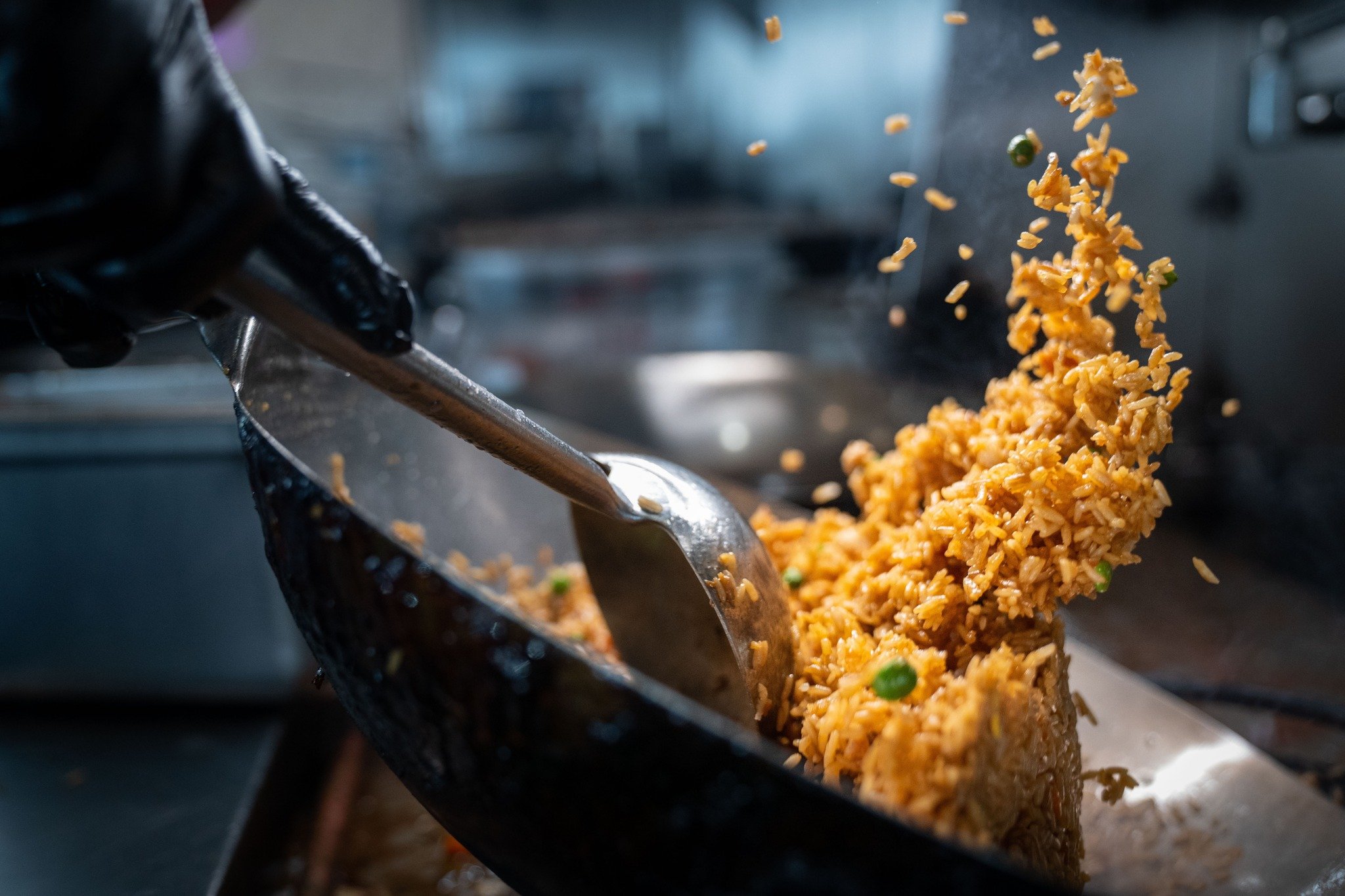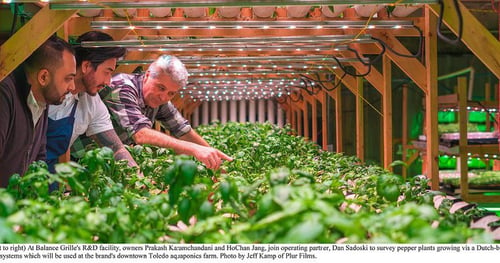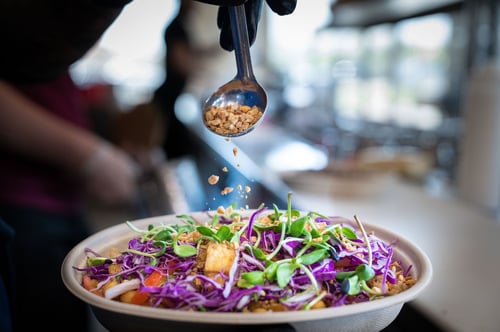Call Sales: +1 (833) 437-3835
Call Sales: +1 (833) 437-3835
Sydney Kida | August 19, 2022 |

You’ve seen them in malls and grocery stores. But the question remains: kiosks in restaurants—do they belong? While they might not be the perfect fit for every concept, kiosk restaurant ordering had a tremendous impact for Balance Pan-Asian Grille, a growing fast-casual brand. We’ll explore the details in this blog post.
In fact, Balance Grille CEO and Co-Founder Prakash Karamchandani, or PK, explains how the implementation of kiosks, online ordering and a proprietary mobile app helped significantly lift the restaurant chain’s average ticket size. Read on for his insights, and listen to his feature on the Restaurant and Retail Revel(ations) podcast here.
So, how did Toledo, Ohio become the birthplace of an innovative, tech-forward fast-casual Asian restaurant with a hyperfocus on fresh ingredients? In the case of Balance Pan-Asian Grille, this was one of the success stories born of the 2008 recession, odd as that sounds.
It all started with the brand’s co-founders (before they knew they would be co-founders). PK and HoChan Jang, or CJ, found themselves looking for work after graduating from college in a market where opportunities were scarce. Close friends already, the two decided that if businesses weren’t hiring, they would create one of their own. CJ hails from a restaurant background, and as they considered different business ideas, that’s the one they chose. Roughly a year later, Balance Pan-Asian Grille was born.
“We really wanted to change the stereotype of Asian cuisine,” says PK. “Nowadays you can probably go out and get a pretty healthy Asian meal, but if you think back a decade ago, people thought, ‘Chinese food,’ and they thought, ‘buffet’—really low quality, cheap takeout and delivery food. Nobody was thinking it would be super fresh.”
Leaning on CJ’s culinary chops and PK’s business acumen, the co-founders challenged this thinking with a restaurant concept showcasing the freshest ingredients in Asian cuisine.
Fast forward more than 12 years, and this concept didn’t just take root; it evolved and grew.
“As far as what Balance is at this point, we’re still a relatively small brand but we’re opening our first store in Denver and we’ve got four locations in Toledo,” says PK. “We also run an aquaponic farm—it’s an urban agricultural project, about 9,000 square feet where we grow a lot of our produce.”
 The brand has done more than challenge the notion of cheap, low-quality Asian food. It has also modernized how its patrons order. Accelerated by the COVID-19 pandemic, online ordering, the brand’s proprietary mobile app, and restaurant kiosk software have revolutionized ordering at Balance Pan-Asian Grille. As the restaurant’s guests have adjusted their behavior to align with these ordering channels, the Balance team has enjoyed major returns.
The brand has done more than challenge the notion of cheap, low-quality Asian food. It has also modernized how its patrons order. Accelerated by the COVID-19 pandemic, online ordering, the brand’s proprietary mobile app, and restaurant kiosk software have revolutionized ordering at Balance Pan-Asian Grille. As the restaurant’s guests have adjusted their behavior to align with these ordering channels, the Balance team has enjoyed major returns.
On the surface, the idea of self-service at a hospitality-focused business like a restaurant may seem disjointed. Afterall, isn’t service central to the guest experience at a restaurant?
In short, yes, service is essential to a great restaurant experience. But how and where those personal touches factor into the customer journey leaves ample space for self-service as well, and often the two strategies complement one another. For Balance Pan-Asian Grille, kiosks allowed self-service to naturally drive upsell opportunities through digital prompts and guest selection, while simultaneously reducing instances of order errors and food waste.
“When you put a customer in front of a kiosk, they can just see all the modifiers,” says PK. “So they start clicking and adding on to their order items, and the next thing you know, a $9.50 bowl is like, $13. Customers are super happy with it. They get what they want, and that’s awesome, and it lifts our average ticket price, which is great.”
Replacing in-store, staff-operated POS terminals with kiosks turned out to be a significant process improvement for Balance Pan-Asian Grille. And continuous improvement just so happens to be central to the company’s culture.
PK and his team made careful decisions about a restaurant kiosk design that would be simple for their customers to adopt. Taking advantage of dining room closures during the pandemic to make interior changes, the team removed the counter-style POS terminals and installed a minimum of three kiosks in their place. Among the design choices for the kiosk-focused experience, for example, included clear signage and in-store prominence so there would be no question for guests of where and how to place their orders.
“I was worried when we re-opened our doors that there would be some hesitation or confusion in terms of how our customers would embrace the kiosk style of ordering, but it was flawless,” says PK. “Customers came in, saw the kiosk, and walked right up.”
For guests, it’s immediately obvious that the first step in the new ordering process is interacting with the kiosk. From there, food is collected at a counter when it’s fresh and ready.

“I think what’s most interesting is the average ticket numbers,” PK says of post-pandemic kiosk usage. “We had a pre-pandemic average ticket of $13.50 when ordering in store, and $15.50 when ordering through the app. Now, we made a few changes to the app, such as suggested items, and we were able to get that average ticket all the way up to $17.70. That was one of the key metrics I was looking at when people placed orders through the kiosk. Would we be able to maintain a high average ticket?”
In rolling out the kiosk, Balance was able to maintain parity with the higher tickets they saw with mobile orders. While in-store averages are slightly below average tickets for app orders, they stayed within about 25 cents of the higher average the brand achieved during the pandemic.
For Balance Pan-Asian Grille, there’s no question that kiosk restaurant ordering was a recipe for success.
The author of this blog post is admittedly biased on the topic of which POS provider offers the best restaurant kiosk. With that said, if the success PK and the Balance restaurants are enjoying has piqued your interest, request a free demo of Revel’s POS platform today. One of our product experts would love to show you how our technology can help you experience similar benefits.